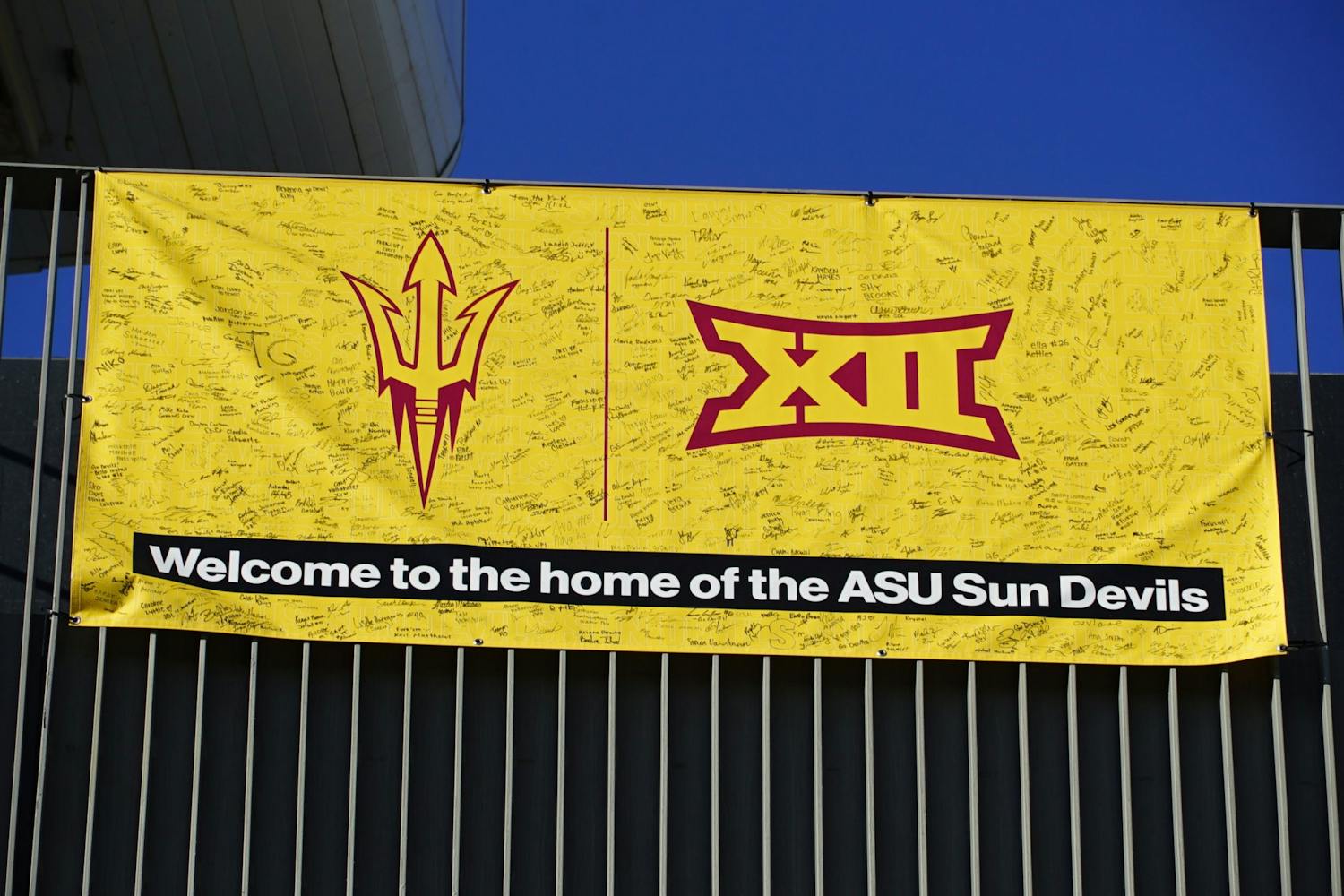What happens when the very system protecting the body is invaded cell by cell?
One ASU professor may have created a vaccine to prevent this virus.
-
She’s so positive; it radiates in every word.
She speaks so lightly, with such an upbeat tone.
She can laugh at a bad situation and have faith that it will get better.
No one would ever know the struggles she has faced.
Barb Brados is a guest lecturer for MIC 314: HIV/AIDS Science, Behavior, and Society, a course at ASU that covers the biology and social stigma surrounding the disease HIV/AIDS.
She comes to the class to tell her personal story, and to put a face to the disease.
Brados was diagnosed HIV positive in 1993, with her husband and son diagnosed shortly thereafter, she says.
Human Immunodeficiency Virus (HIV) attacks and kills cells in the immune system, weakening the system and creating a greater risk for infection.
Brados found she contracted the virus because of her husband's infidelity. The virus spread from Brados to her son when he was born.
He died at age 6 from a brain aneurism, a complication of AIDS.
“I will never have to do anything that hard again in my life,” Brados says.
Brados went to see her physician shortly after her diagnosis and was told that she would die; she only had 77 T-cells in her body.
T-cells are crucial immune system cells that fight against infection throughout the body.
She received treatment of both Eastern and Western influence, at one point taking 113 pills a day and keeping them in organizational nail box from Home Depot.
Twenty-one years later Brados is down to 45 pills and uses her story to spread awareness to help other people and families cope with their disease.
When she goes to tell her story, Brados gives the students her philosophy on life: “Bad things are going to happen to you,” Brados says. “But it’s how you deal with them and what you do afterwards that matters.”
Brados works at the Southwest Center for HIV/AIDS and has made it her professional goal to create more services for families and children who have the disease or are directly affected by it.
“When I was diagnosed, there weren’t services that you could go to,” Brados says.
The lack of services inspired her to create family support groups and a kid’s summer camp called Camp Incredible.
“Doing my work really arose from a need in the community,” Brados says.
Students of MIC 314 often come to volunteer for Brados, she says, and some have been there for six or seven years after their class concludes.
HIV made its historical debut decades ago, which resulted in mass hysteria and homophobia, as the virus was believed to have only been passed along between men engaging in intercourse.
Now, however, it is common knowledge that HIV is passed through the sexual relations of any two persons.
When HIV affects so many cells, the result is AIDS, or Acquired Immune Deficiency Syndrome, which if gone untreated often proves fatal.
Today, more than 30 million people are living with HIV/AIDS, according to AIDS.gov. And more than 35 million are estimated to have died of AIDS worldwide since the first cases were reported in 1981.
ASU has been taking steps to educate students on the biology behind HIV/AIDS and the social stigma that still surrounds the virus. MIC 314 is one of those steps.
MIC 314
It is not often that a class comes along that is both focused on science and the social impact surrounding that science.
The course, MIC 314 began about 20 years ago by ASU psychology professor Austin Jones, says Bertram Jacobs, current MIC 314 professor and ASU Director of Life Sciences.
“This class is teaching the biology of HIV to people who have no scientific background,” Jacobs says. “It’s about what happens when the body fails.”
MIC 314 is a class that educates students on the biology behind HIV and does something unique for a microbiology class: It requires volunteer work.
Damien Salamone also teaches the course at ASU and says the course offers two unique things.
“This class is so different because it has the lecture component but there is also a component of student engagement, students are required to volunteer for this class,” Salamone says.
Students volunteer at places around the Valley that help the victims of HIV, Salamone says, and very often students have great experiences and change their majors to public health.
“It offers opportunity to reduce stigma and increase accurate information [about HIV] in society,” Salamone says.
The class, aside from a volunteer requirement, also employs very powerful guest speakers to explain how HIV and its surrounding stigma impairs one’s lifestyle.
“There is something to be said about a class that deals with sex,” Salamone says. “It sells itself…it’s a taboo topic.”
“The class serves as a platform to dispel issues creating dysfunction,” he says.
The Vaccine
Jacobs, inspired by the MIC 314 class and the lives of the afflicted, began to research possible vaccines to prevent the spread of HIV.
“As a virologist, I sort of made the decision to work on a major viral disease, which is HIV, and really focus on it,” Jacobs says. Virologists focus their research on viruses.
“HIV is what we need to be fighting," he says.
Jacobs says he has been working on a vaccine since 2009, which will potentially be entering the human clinical trial phase in 2015.
The vaccine is a prophylactic, Jacobs says. Prophylactic vaccines are given to healthy people to prevent viruses like HIV.
The vaccine, if effective, will be the first of its kind.
Accompanying that accomplishment, Jacobs is also working with collaborators at Duke University on a different kind of concept that has never been seen before, he says.
“There are thousands of strains of HIV out there,” Jacobs says. “So how do you make one vaccine to prevent them?”
A Duke collaborator working with Jacobs, followed a willing HIV-positive person over the course of two years and collected blood samples every two weeks from the same person, Jacobs says.
This created broadly neutralized antibodies, Jacobs says, which could, in theory, be used to prevent the thousand or so known strains of HIV.
While this is a collaborative effort, three-quarters of the research will be completed at ASU, Jacobs says.
“If it works, it’ll be the most complex vaccine anyone has tried,” Jacobs says.
These vaccines could prevent the virus currently plaguing the more than 30 million people living with HIV.
Reach the writer at Alexa.Dangelo@asu.edu or via Twitter @andangelo15.



